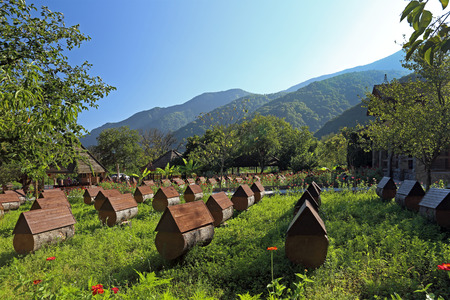Mountain Honeybees: Adapted for High-Altitudes
June 07, 2017
All creatures, from human beings to insects, come with their own set of unique genetic variables that have evolved over the course of millions of years to get them to where they are now. As well, honeybees, with their thousands of species all over the world, are remarkably different from one another based on many things, especially where they originate. For instance, two East African honeybee species—dark monticola bees and bright scutellata bees—differ in large part due to their respective environments.
Mountain Honeybees vs. Savannah Honeybees
Dark monticolas are mountain dwellers while bright scutellatas dwell in the savannahs that surround the mountains. Now, the truly noteworthy discovery isn’t that these bees are different. It is that the mountain dweller bee has clear-cut genetic variations that help it survive foraging in high altitudes that its savannah cousin does not possess after evolving and adapting to its own climate.
Martin Hasselmaan from Germany’s Hohenheim University, Matthew Webster from Sweden’s Uppsala University, and colleagues called this an “ancient adaptation” in their published PLOS Genetics report. Dark monticola honeybees from the East African mountains appear and act differently from those inhabiting the lowland savannahs. The mountain bees, less aggressive, darker, and larger compared to savannah bees, can fly during colder temperatures and preserve honey even when flowers haven’t bloomed.
Genome Study
To further understand the hereditary basis for this high-altitude adaptation, researchers sequenced 39 bee genomes, using two lowland and two highland populations from Kenya. All the genomes were very similar, but there were two regions on chromosomes 7 and 9 that showed steady differences between honeybees living in low and high-altitude habitats. The differences involved e.g. receptor genes for the neurotransmitter octopamine, which plays a part in foraging and learning. The divergence between the two genetic differences suggests they possess a prehistoric origin that likely existed within the honeybee populations before separating into savannah and mountain environments.
This comprehensive genome study of Kenyan high-altitude honeybees disclosed fresh insights about their evolutionary past and the hereditary basis for their local adaptation. Researchers had merely believed savannah and mountain bee populations were both distinct subspecies. The high level of similarity between their genomes, revealed in this study, shows they continuously interbreed. The very diverged segments most likely signify structural rearrangements, including inversions, meaning the trade of genetic matter is subjugated.
Compared to Other Studies
Past studies have recognized octopamine as a significant signaling molecule within other insects in low oxygen and low temperature conditions. As Hasselmann said, "Our findings complement several other landmark studies where adaptations have been similarly tied to structural variants or supergenes. However, this phenomenon has never been documented in honeybees before. Our results should therefore spur further research into the role of supergenes in environmental adaptation. We are planning now to measure the distribution of these divergent segments in other geographic locations and to elucidate the functional link of these genes with behavior."
Copyright: pisotckii / 123RF Stock Photo


.jpg)




